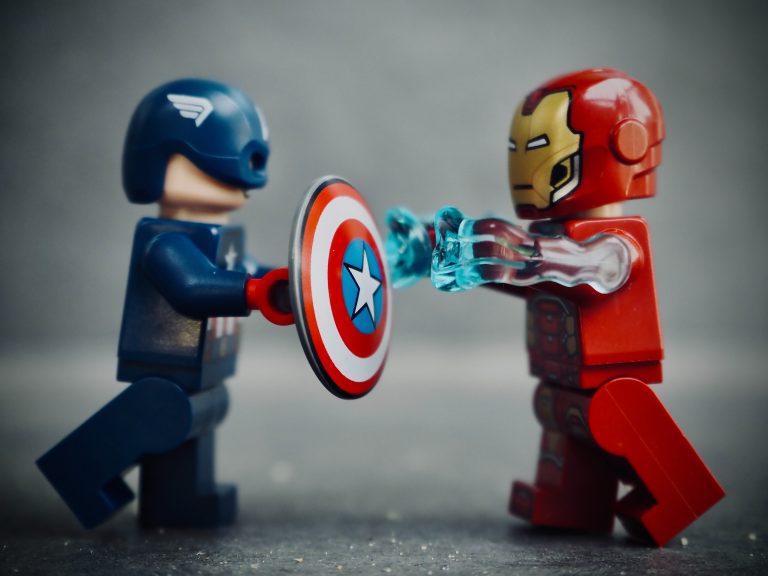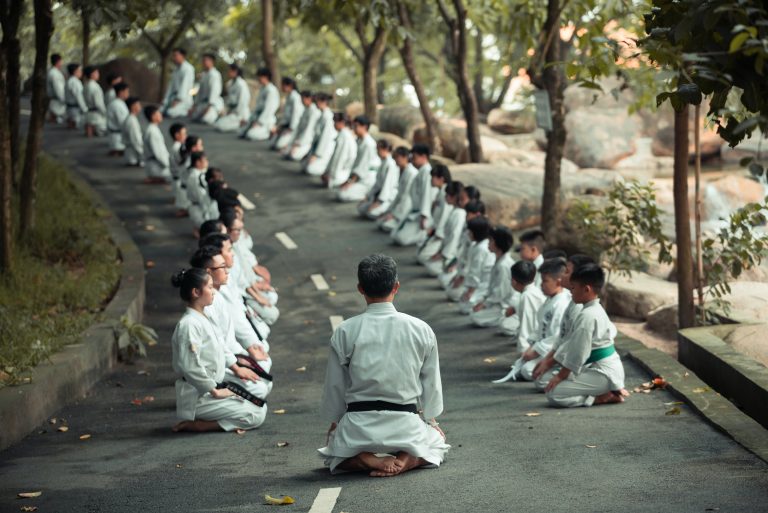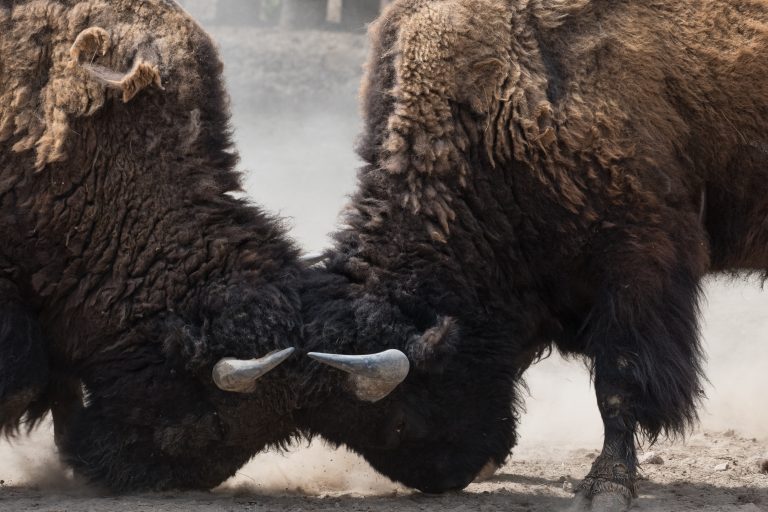Karate: What Are the Different Belt Colors and What Do They Represent?
If you practice karate, you already know about the ritual of achieving higher belts and advancing through the martial art. Each belt demonstrates a different level of rank, proficiency and skill. For those who may not know much about the art, however, the different belt colors along with their significance can be confusing. In this blog post, we’ll take a closer look at what each karate belt color means and how it reflects the path of growth in the martial art.
What Are the Different Karate Belt Colors?
Karate students traditionally begin with a white belt and advance to higher belts, each color symbolizing an increased level of achievement and skill. Here is a breakdown of the common belt colors used in many karate schools around the world:
- White belt: This is the starting belt that represent absolute beginner rank. Students who start karate with no prior training or knowledge will begin at this white belt level.
- Yellow belt: The yellow belt is a transitional belt for aspiring karate-ka (karate practitioners). It is an indication that the student can understand and follow the basics of karate, as well as its concepts and principles.
- Orange belt: This belt is traditionally associated with the sunrise and its promise for a new day, reflecting hope and optimism in the discipline of karate.
- Green belt: Green belts signify growth in skill and confidence. It represents a student’s commitment to advancing their training and improving their technique.
- Blue belt: Another transitional belt, blues signify learning and mastery of basics and middle-level skills in karate.
- Brown belt: Brown represents a mastery level of karate skills. It also shows dedication to a practice that requires patience, focus and strength.
- Black belt: This is the highest traditional belt level. It indicates an expert level of proficiency and skill in karate.
What Do the Different Karate Belt Colors Represent?
Each colored belt in karate has its own unique symbolism. Below we’ll explore each one in more detail:
White Belt
The white belt signifies innocence, purity and inexperience. It is the beginning to a student’s journey in karate, marking the start of their path to growth. “The white belt represents a blank canvas that you are about to begin painting,” explains black belt holder Ricky Sosa. “Your years of dedication transfer from white to black and you begin to create your own story.”
Yellow Belt
The yellow belt symbolizes enlightenment. It is a reminder that even from a beginner’s stage, much can be learned if you have the correct attitude. As Sosa explains, “at a yellow belt student level it is already time for them to get serious about their training, not only following what’s on their table of knowledge but also looking ahead and preparing for their next level of achievement.”
Orange Belt
The orange belt connects physical achievements with inner strength. By mastering specific technical skills, students can tap into their inner power and potential, which gives them an increased sense of achievement and confidence. This can serve as a powerful reminder of how far they have come. As Sosa puts it, “different belts signify different levels of physicality…but more importantly, they represent personal growth that one has gone through to reach such levels. As you progress you become stronger not only physically but mentally as well.”
Green Belt
The green belt represents growth in every aspect. Physically, it signifies increased proficiency as well as understanding in technical skills as well as proper application of techniques in sparring or other competitive arena. On an emotional level, it reflects increased confidence in oneself and one’s skills—a time for sharpening one’s ability but also learning how to control oneself in the moment to remain calm and focused under pressure.
Blue Belt
The blue belt speaks to perseverance through hardship. It reminds students to remain focused on their goals despite any obstacles they may face and not give up even when faced with difficult tasks or trying circumstances. As Sosa states, “blue belts should understand that with hard work lies great reward; dedication, practice and discipline will lead to success.”
Brown Belt
The brown belt is characterized by dedication and commitment to one’s practice. It is often referred to as the “mastery” stage where practitioners refine their skills and develop an advanced understanding of karate concepts and principles. According to Sosa, “one should respect their knowledge of martial arts by subduing their ego, who most often does not have a black belt if he behaves so arrogantly with his brown belt knowledge; for senior belts…should show respect for those just beginning their journey.”
Black Belt
Finally, the black belt is recognized as the highest rank that can be achieved in karate. It denotes expert-level proficiency, an understanding of the various skills and techniques required to excel at the sport, but also the discipline and focus necessary to continue pushing one’s limits while performing within the boundaries of proper technique. “Having mentioned all before-mentioned colors doesn’t change the fact that black belts should continue perfecting their technique as there is always something more that one can learn no matter how experienced they are,” Sosa adds.
Wrap Up
Karate belts are an important part of learning martial arts because they provide a visual representation of our progress and achievements along our journey. As students advance through the different levels, they must look within themselves for personal development while continuing to work on their physical technique—taking each new step as an opportunity to learn something new about themselves and about the sport itself. Through understanding what each color symbolizes and learning from each stage of growth, practitioners can push past their limits and become stronger versions of themselves than ever before.
What Are the Different Karate Belt Colors?
Karate, a martial art that originated in Okinawa, Japan, has become one of the most popular sports in the world today. It is a combat sport that requires discipline, focus, and dedication. One of the most important aspects of karate is the belt system. The belt system in karate is used to indicate a practitioner’s level of skill and knowledge. In this blog post, we will be answering some of the frequently asked questions about the different karate belt colors.
1. What are the colors of the karate belts?
Karate belts come in different colors, and each color represents a different level of skill and knowledge. The most common karate belt colors are white, yellow, orange, green, blue, purple, brown, and black.
2. What is the meaning behind each color of the karate belt?
The meaning behind each color of the karate belt varies depending on the school or organization that uses it. However, there are some common interpretations that are widely accepted in the martial arts community. Below are some of the most common interpretations:
– White Belt: The white belt symbolizes a beginner’s innocence, purity and lack of knowledge. It indicates that the practitioner is just starting to scratch the surface of karate.
– Yellow Belt: The yellow belt represents a student who has learned the basics of karate and is starting to develop a foundation of knowledge. It also signifies the beginning of the student’s journey towards understanding the more advanced techniques of karate.
– Orange Belt: The orange belt represents a student who has developed a solid foundation of knowledge and is starting to progress towards more complex techniques. It also indicates that the student is becoming more disciplined and focused.
– Green Belt: The green belt represents a student who has made significant progress in their training and has developed a strong foundation of skills. It indicates that the student is becoming more confident and capable in their abilities.
– Blue Belt: The blue belt represents a student who is developing a deeper level of understanding of karate. It indicates that the student is starting to explore the more philosophical aspects of the martial art.
– Purple Belt: The purple belt represents a student who has mastered the basics of karate and is starting to specialize in a specific area of the martial art. It indicates that the student is becoming increasingly skilled and knowledgeable.
– Brown Belt: The brown belt represents a student who is approaching the highest levels of proficiency in karate. It indicates that the student is becoming a master of the martial art and has developed a deep level of knowledge and understanding.
– Black Belt: The black belt is the highest level of proficiency in karate. It represents mastery of the martial art and a deep level of knowledge and understanding. It also signifies a commitment to the continued study and development of karate.
3. How long does it take to move up to the next belt color?
The amount of time it takes to move up to the next belt color varies depending on the school, organization, and individual student. Generally, it takes several months to a few years to move up to the next level. The amount of time it takes depends on several factors, including the student’s dedication, skill level, and training frequency.
4. Can you skip a belt color?
Skipping a belt color is uncommon, but it is possible in some schools or organizations. However, it is important to note that skipping a belt color is not the norm and should only be done in rare circumstances. It is essential that students take the time to develop a solid foundation of knowledge and skills before moving on to the next level.
5. Can you train in karate without earning belts?
Yes, you can train in karate without earning belts. It is not mandatory to earn belts to train in karate. Some students practice karate for the health benefits, self-defense, or the enjoyment it brings. Earning belts is a way to measure your progress and achievements in the martial art, but it is not the only way to benefit from karate training.
6. What is a black belt in karate?
A black belt is the highest level of proficiency in karate. It represents mastery of the martial art and a deep level of knowledge and understanding. It also signifies a commitment to the continued study and development of karate. Black belts are respected and admired in the martial arts community for their dedication, discipline, and skill.
Conclusion
In conclusion, the belt system in karate is an essential part of the martial art. It is used to indicate a practitioner’s level of skill and knowledge. The different belt colors represent different levels of proficiency, and each color has its own unique meaning. The amount of time it takes to move up to the next belt color varies depending on the individual student, and skipping a belt color is uncommon. It is possible to train in karate without earning belts, but earning belts is a way to measure progress and achievements in the martial art. A black belt is the highest level of proficiency in karate, and it represents mastery of the martial art, a deep level of knowledge and understanding, and a commitment to continued study and development.
Inhaltsverzeichnis






